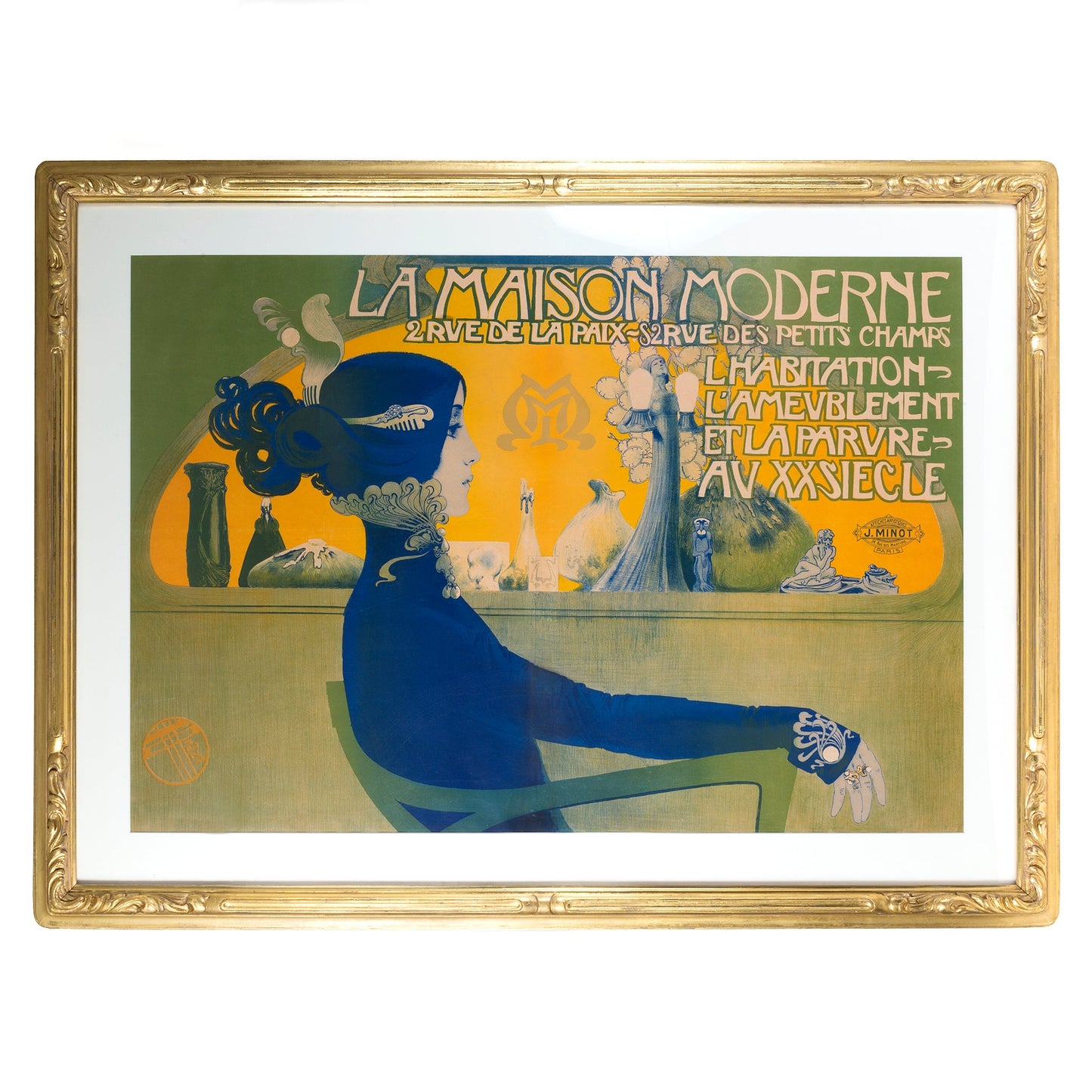Manuel Orazi "La Maison Moderne" ("The Modern House") Lithograph
This stunning lithograph was created by the Italian artist Emannuel Orazi for La Maison Moderne, the gallery of Bing’s competitor Julius Meyer-Graefe. The model, muse, and superstar Cleo Merode is superbly dressed with two hair combs designed by Manuel Orazi. Bertrand Mothes, in his paper, "La Maison Moderne de Julius Meyer-Graefe" helps us identify these objects: "an inkwell bearing a bronze figure of Alexander Carpenter on a base designed by [Maurice] Dufrêne and made of flamed sandstone by Adrien Dalpayrat, an armchair by Van de Velde, a bronze lamp by Gustave Gurschner, a vase by Dufrêne and Dalpayrat and a monkey figurine by Joseph Mendes da Costa." The niche that houses these objects is the same shape as Dalpayrat’s flambe vase, creating a satisfying rhythm to the composition. Orazi artfully places a stalk of Monnaie-du-pape (Papal Money) plant in the dalpayrat vase. The Monnaie-du-pape was the favored plant of Art Nouveau artists in both Paris and Nancy. Loved for its glass-like transparency and elegant ogival shape, Orazi and his fellow Maison Moderne artists often included the fruit in their work.
Item #: YML-20108
Artist: Manuel Orazi
Country: France
Circa: 1900
Dimensions: 40" height, 55" width (framed)
Materials: Lithograph on linen, , Giltwood gesso frame
Signed: Stamped with “J. Minot, Paris”, the store's stylized "MM" logo, designed by Georges Lemmen in center
Literature: An image of is poster is pictured in: Art Nouveau Posters & Graphics, by Roger Sainton, New York: Rizzoli, 1977, p. 33; and in: The French Poster: Chéret to Cappiello, by Jane Abdy, New York: Clarkson N. Potter, Inc., 1969, p. 162.
Item #: YML-20108
Artist: Manuel Orazi
Country: France
Circa: 1900
Dimensions: 40" height, 55" width (framed)
Materials: Lithograph on linen, , Giltwood gesso frame
Signed: Stamped with “J. Minot, Paris”, the store's stylized "MM" logo, designed by Georges Lemmen in center
Literature: An image of is poster is pictured in: Art Nouveau Posters & Graphics, by Roger Sainton, New York: Rizzoli, 1977, p. 33; and in: The French Poster: Chéret to Cappiello, by Jane Abdy, New York: Clarkson N. Potter, Inc., 1969, p. 162.



















